It's no secret that indoor plants liven up the home. It's also a fun way to show off your gardening skills. If you're like many gardeners, you might be dreading the coming winter because it typically means the end of the gardening season.
But don't let the winter season deprive you of beautiful blooms because a variety of indoor winter plants produce gorgeous flowers.
To help you, we created a list of 17 indoor winter plants that flower! Bringing these flowering plants into your home makes winter feel just a bit warmer. Without further ado, let's check out these plants!
1. Christmas Cactus
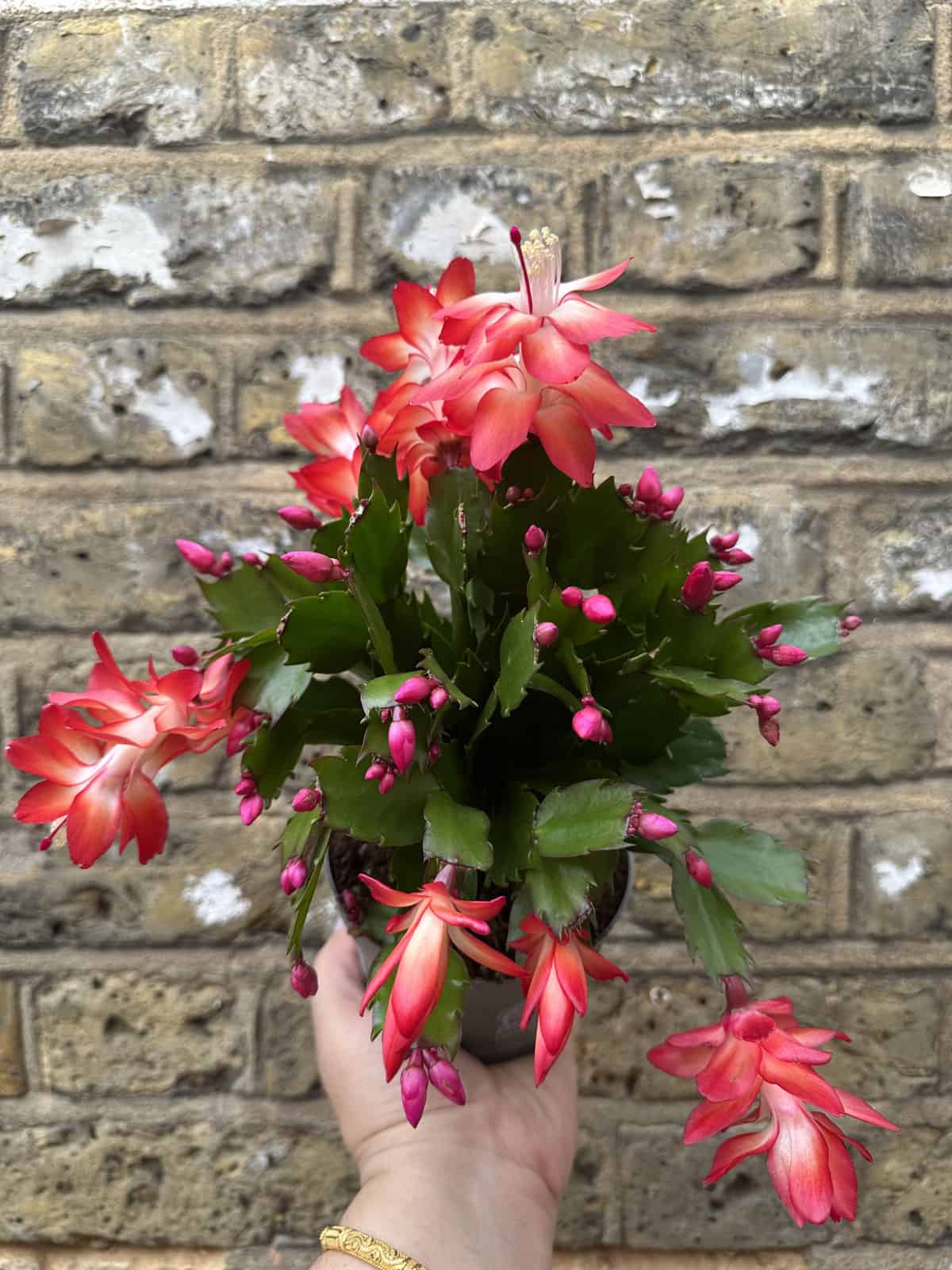
A Christmas cactus plant is recognizable by its flattened, rounded, segmented stems. The segments are dark green and glossy and can reach up to 3 feet in length.
As its name suggests, it flowers in the winter around Christmas. The flowers may be red, white, pink, yellow, or purple. Its Latin name is Schlumbergera x buckleyi.
Caring for the Christmas cactus is rather simple if you provide it with the right conditions. Plant it in a soil that's rich in nutrients and drains well.
Ensure that the soil is kept evenly moist, and use a fertilizer every 2 weeks to prolong the life of the blooms. Position it in a spot that receives moderate light.
2. Begonia
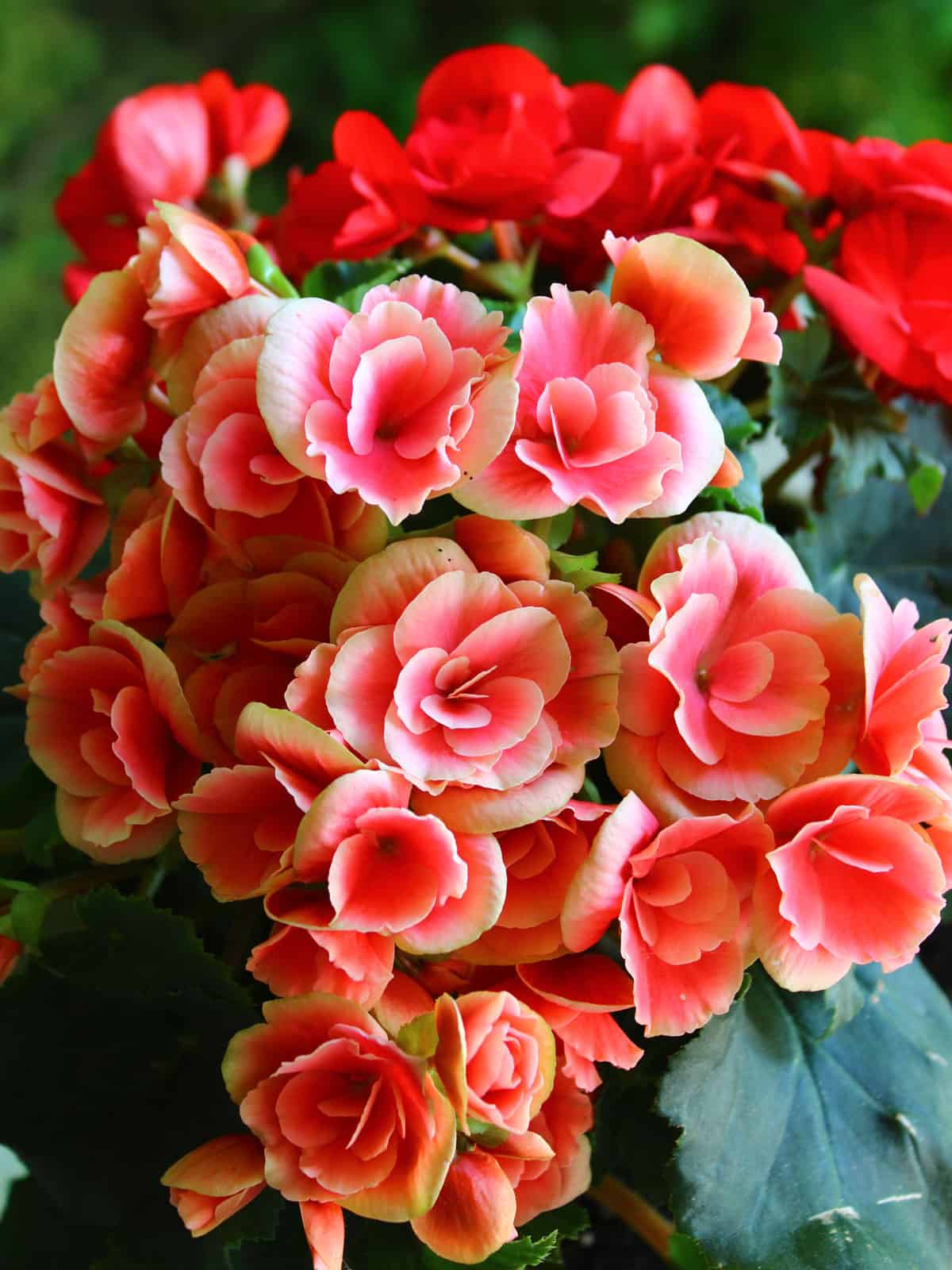
Begonias are a popular indoor houseplant because of their gorgeous blooms and foliage. Flowering begonia plants do so at various times during the year.
The flowering begonias have dense purplish foliage, and its blooms come in shades of pink, red, yellow, and purple. Its Latin name is Begonia.
Indoor begonias need bright, indirect sunlight with plenty of humidity. The soil should be kept evenly moist without becoming soggy. A well-balanced fertilizer promotes good health during its growing period.
3. Columnea

The columnea plant, also known as a goldfish plant, features bright orange and yellow flowers that look like leaping goldfish.
The foliage is bright green and its branches reach a few feet long. When placed in a hanging basket, the branches cascade wildly. Its Latin name is Columnea gloriosa.
These plants do best in bright, indirect sunlight. The soil should be light and well-draining. Try to keep the soil moist, but not soggy.
4. Jasmine

Jasmine plants have a sweet aroma to them, making them excellent houseplants. The plant has glossy dark green leaves and tiny white fragrant blossoms.
The blooms are star-shaped and measure about 1 inch in diameter. Most varieties are vigorous climbers. Its Latin name is Jasminum polyanthum.
The jasmine plant is sensitive to indoor conditions, so keep them optimal. Water the plant when the first half-inch of soil has dried out. Please place it in a spot that receives at least 6 hours of direct sunlight.
5. Flowering Maple
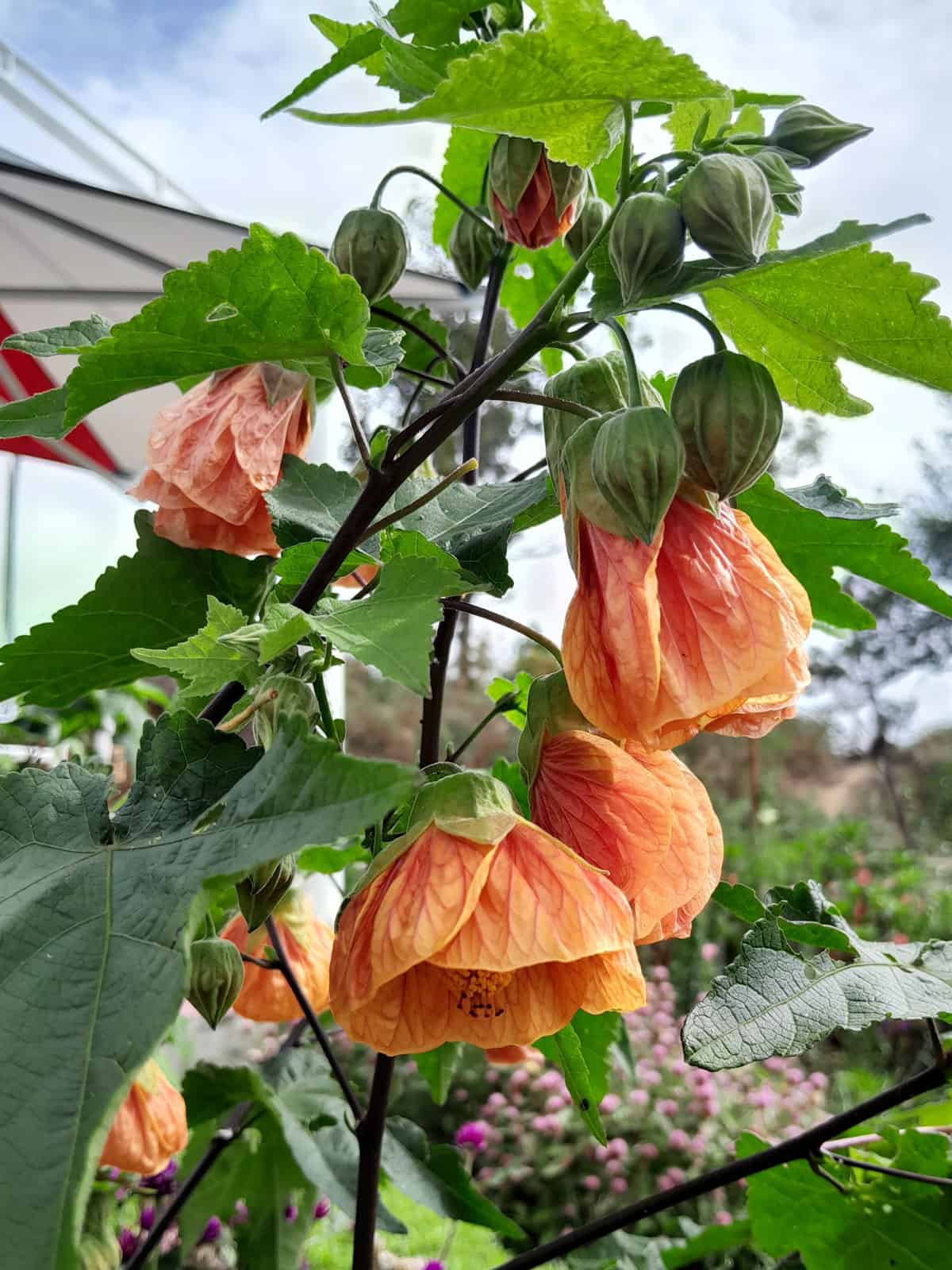
Despite its name, the flowering maple is not a member of the maple tree family. Its name refers to the similarity in the shape of its leaves to maple trees.
The leaves may be solid green or variegated. This plant has a shrubbing habit of growth with hibiscus-like blooms. Its Latin name is Abutilon striatum.
Place the flowering maple in a spot that receives full sunlight or a very light shade. The soil must be well-draining and nutrient-rich. Water it deeply, but don't allow the soil to become soggy.
6. Anthurium
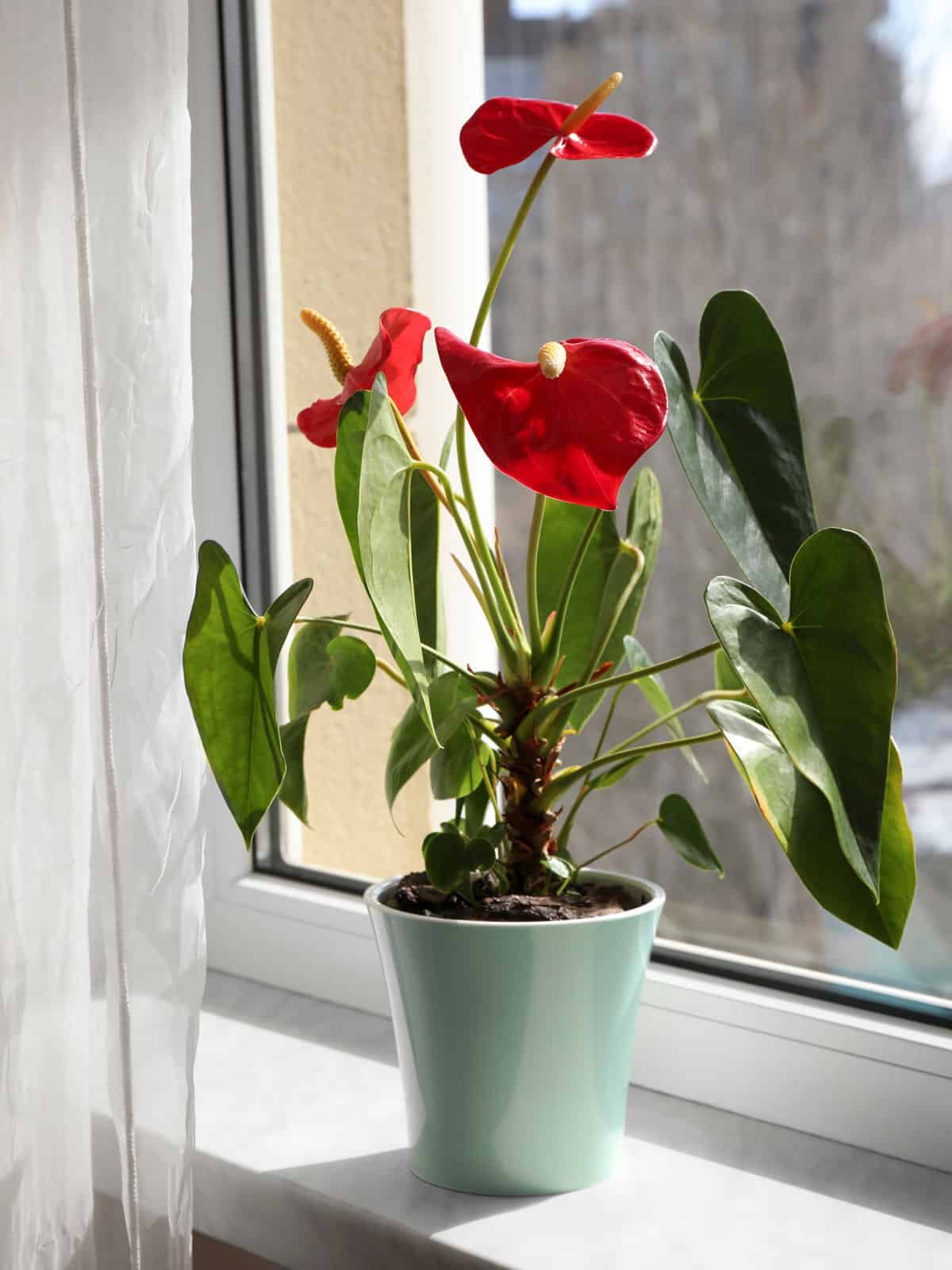
The anthurium plant is a beautiful tropical-looking plant. The "flowers" on it are not flowers at all; they're colored, heart-shaped waxy leaves. These leaves can be red, white, pink, or purple.
The fleshy yellow spike in the middle of these colored leaves is where the small blooms appear. Its Latin name is Anthurium andraeanum.
Bright, indirect sunlight is optimal for the health of this plant. Direct sunlight can scorch its leaves.
The soil must be well-draining and contain some level of nutrients. Fertilize it once every 3 to 4 months with a fertilizer with a higher phosphorous level.
7. Geranium

While geraniums are very popular outdoor plants, they also perform well indoors. There are both zonal (mounding) and ivy leaf (trailing) varieties of geraniums, so pick which growth habit you prefer.
Flower colors include white, pink, red, salmon, and lavender. Its Latin name is Pelargonium x hortorum or Pelargonium peltatum.
Geraniums must receive between 6 and 8 hours of direct sunlight each day. The soil should be lightweight, loamy, and well-draining.
Let the soil dry out before watering again. Fertilize the plants with an all-purpose fertilizer every growing season.
8. Lipstick Plant
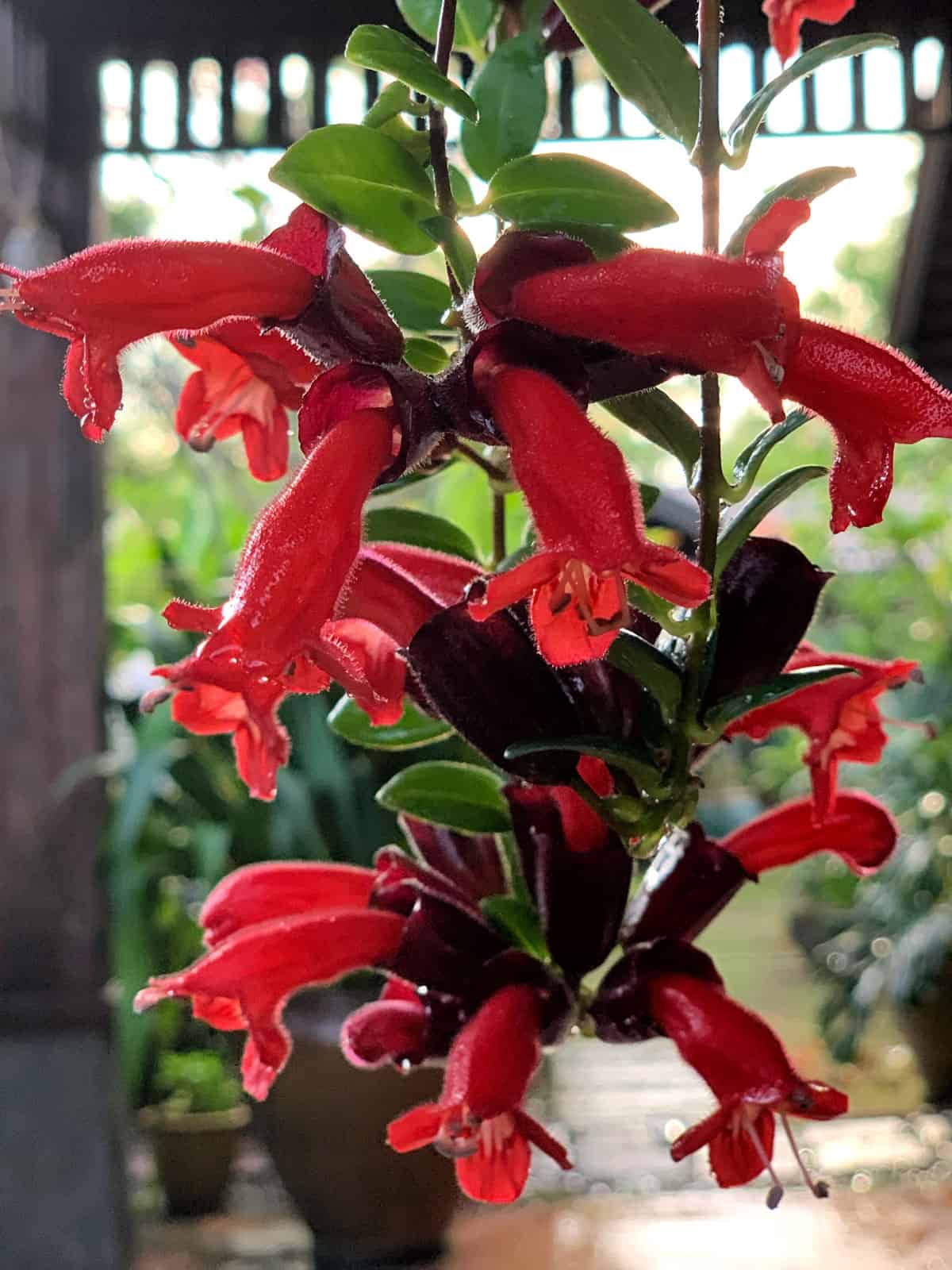
There is a wide variety of these unique plants. Most feature pointy, ovate waxy leaves, and clusters of bright blooms.
Its flowers are bold and bright red. It can bloom all year, but it shows off the most blooms in the summer and fall. Its Latin name is Aeschynanthus radicans.
The lipstick plant requires airy soil that's well-draining, nutrient-rich, and fertilized. This plant loves humid conditions. It needs bright, indirect sunlight for at least 6 hours a day. Water it moderately, but not too much.
9. Oxalis
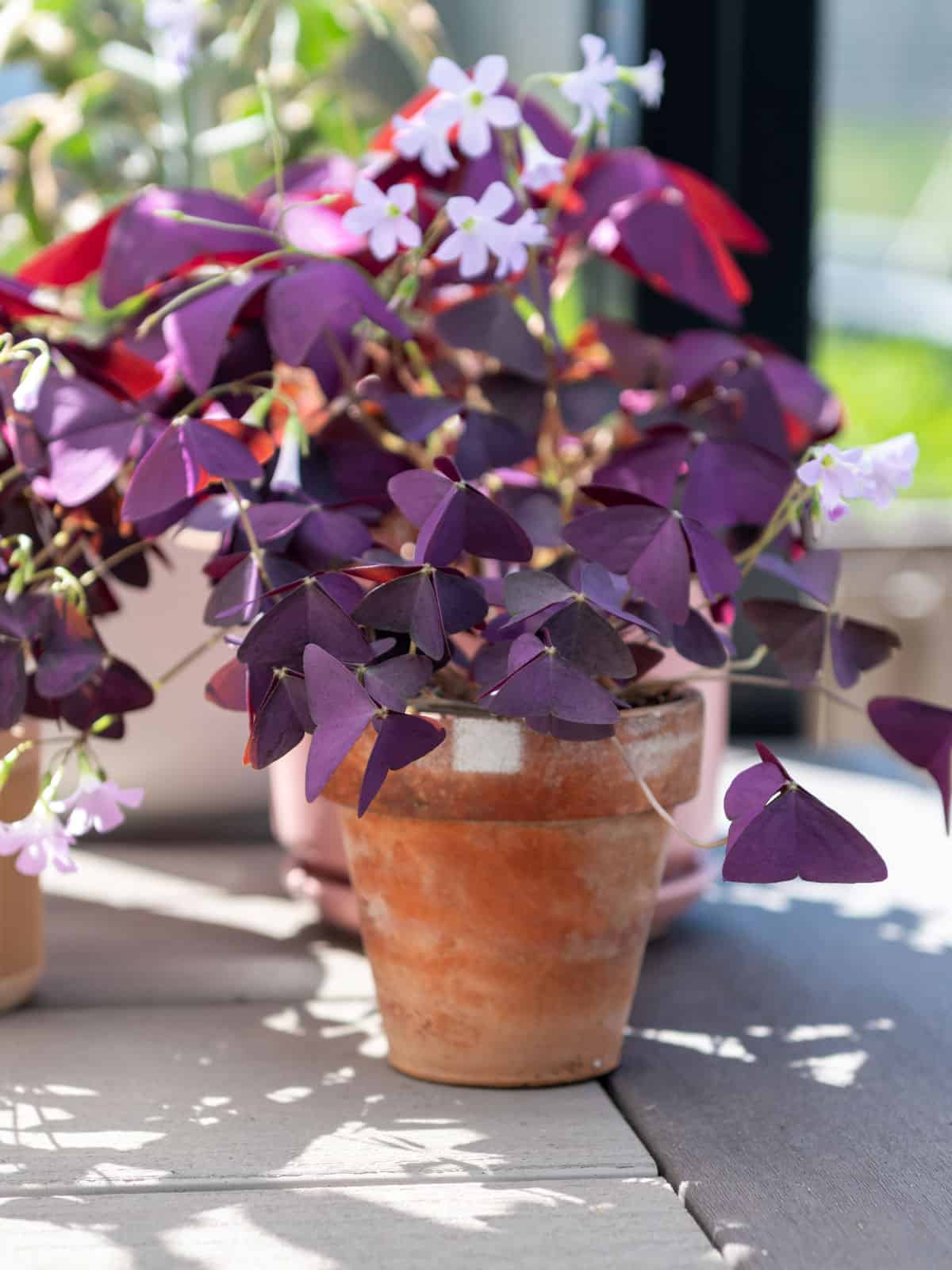
Also known as the shamrock plant, the oxalis is a flowering plant that has shamrock-shaped green or dark purple leaves.
The five-lobed flowers come in shades of purple, white, pink, or yellow. It has a mounding growth habit, reaching 12 inches tall and wide.
Its Latin name is Oxalis triangularis or Oxalis regnellii.
To take the best care of the oxalis plant, plant it in well-draining, slightly acidic, nutrient-rich soil. It requires a few hours of sunlight each day. Water it only a few times monthly, letting the soil dry between waterings.
10. Kaffir Lily
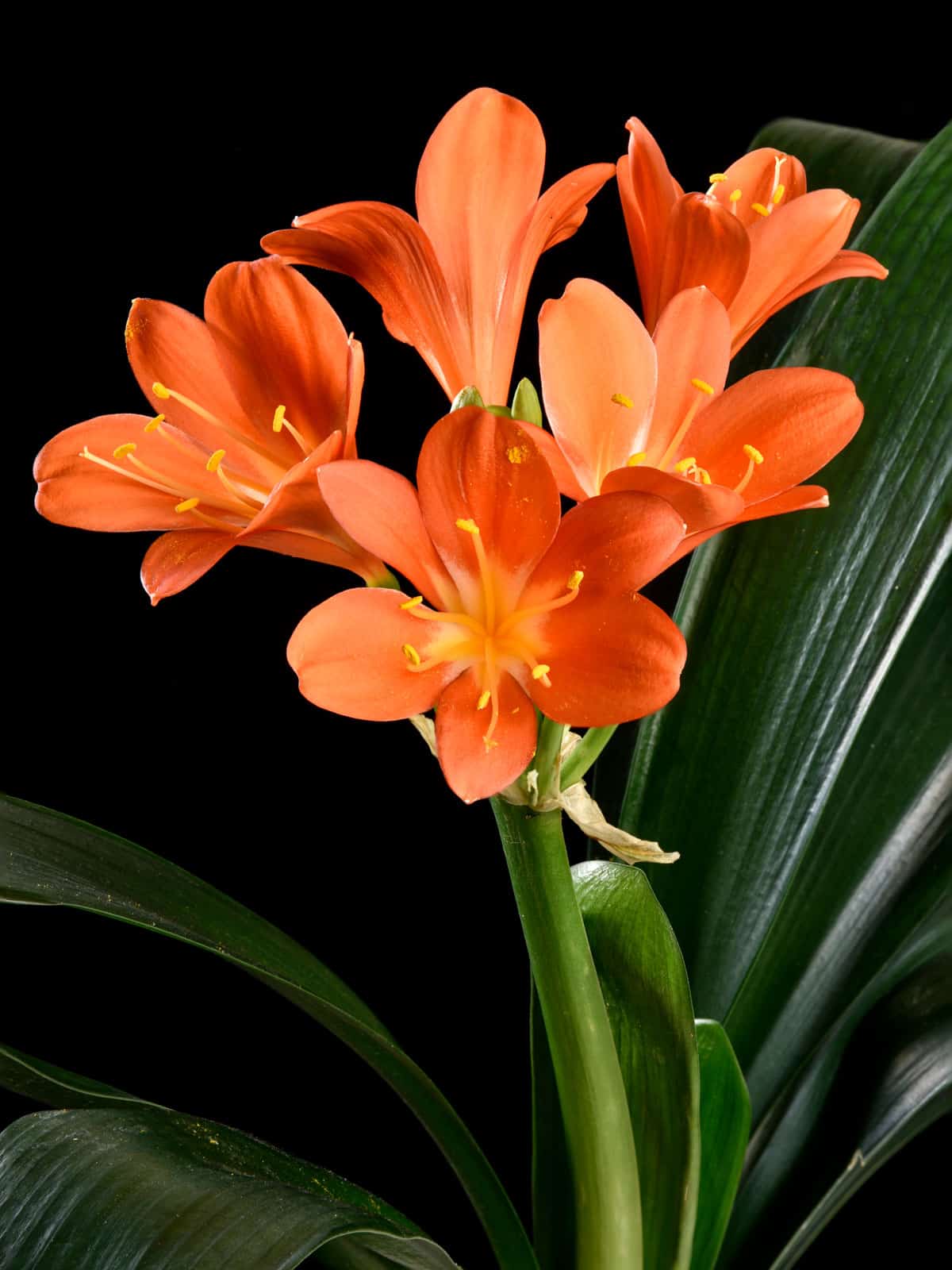
The kaffir lily, also known as the bush lily, has wide-strapped, leathery green leaves and clusters of trumpet-shaped blooms.
The flowers come in shades of orange, white, red, and yellow. At maturity, it can grow to 18 inches tall and wide. Its Latin name is Clivia miniata.
Position the lily in a spot with bright indirect sunlight. The soil should be well-draining, nutrient-rich, and evenly moist. Water it sparingly in the winter months.
11. Crown Of Thorns

As the name may suggest, the plant has sharp blackthorns that grow along its main branches and stems. Its bright green leaves are thick and succulent. The small clusters of flowers can be shades of pink, white, red, orange, or yellow.
Its Latin name is Euphorbia milii.
The crown of thorns plant is very forgiving, so it's easy to care for. Ideally, it should be placed in a sunny window with at least 3 hours of direct sunlight. Only water the plant when the first inch of soil is dry.
12. Ixora

Ixora plants are small plants with a shrubbing habit of growth. Its clusters of flowers extend from dark, glossy green leaves.
The clusters of flowers can be seen in shades of red, pink, yellow, white, or orange. The ixora can reach between 2 and 4 feet in height.
Its Latin name is Ixora coccinea.
Ixora plants like bright, indirect sunlight for at least 6 hours daily. High humidity and moist soil are ideal conditions. The ixora plants perform best in acidic soil that's rich in nutrients.
13. Kalanchoe
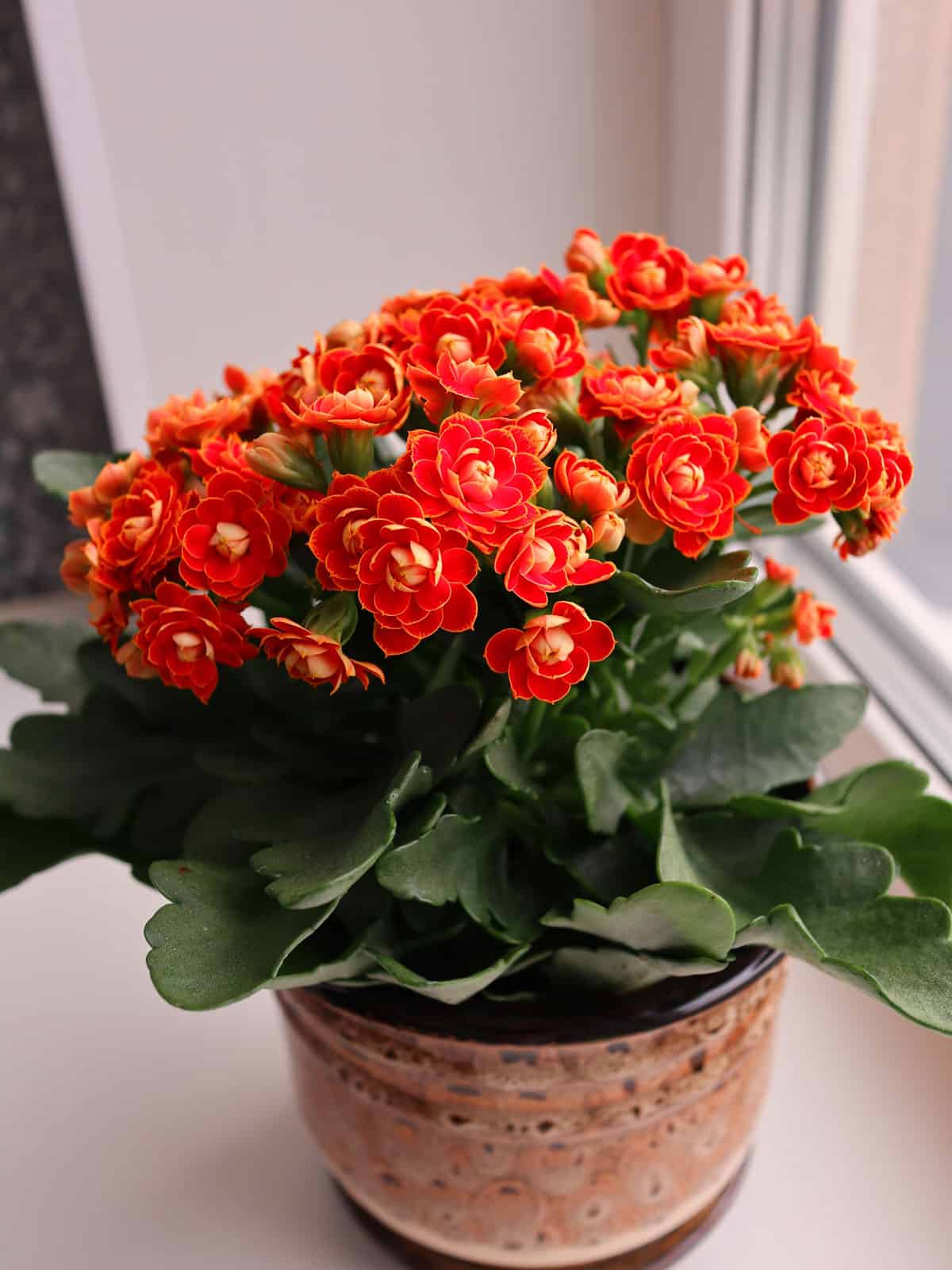
The kalanchoe is a very popular succulent houseplant that shows off a gorgeous splay of long-lasting colorful blooms.
The foliage is glossy green and quite large. Its beautiful blooms are available in shades of pink, yellow, magenta, red, and white. They'll typically reach a height of around 12 inches.
Its Latin name is Kalanchoe blossfeldiana.
Bright, natural, indirect light is necessary for their health and growth. Ensure that the soil is well-draining and water the plant every 2 weeks. Compost-rich soil is optimal.
14. Miniature Roses
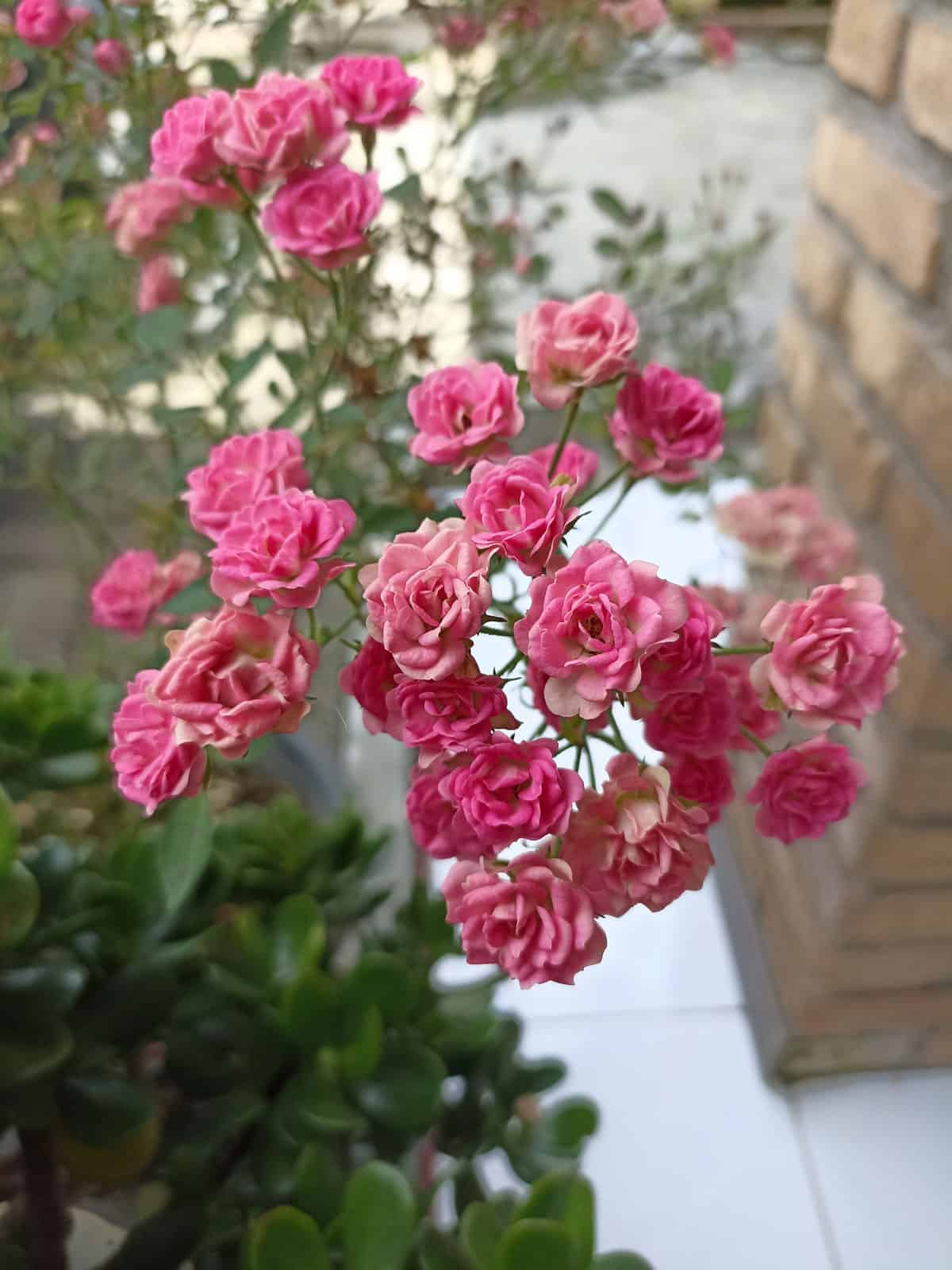
Give miniature roses a shot if you want a dainty indoor houseplant option. This small shrub can either have a climbing or shrubbing habit of growth.
Its tiny rose blooms are available in shades of white, pink, red, yellow, orange, peach, and many other combinations. Its Latin name is Rosa chinensis.
These mini blooms need plenty of sunshine, at least several hours of direct sunlight each day. Water them regularly, not allowing them to dry out too much. Any neutral potting mix is fitting.
15. Cyclamen
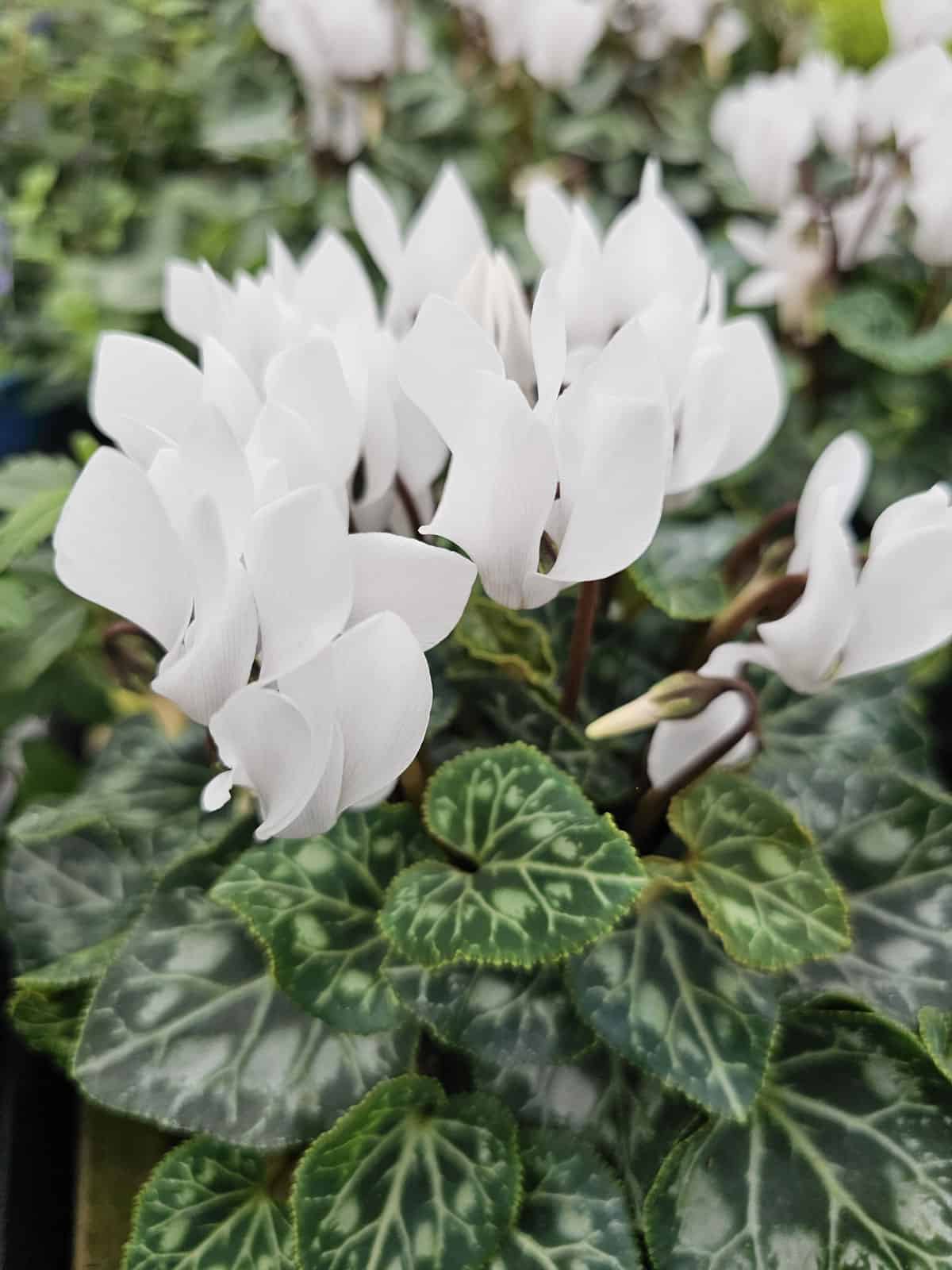
Cyclamen plants are unique and feature beautiful foliage and plentiful blooms. The leaves are interesting with their variegated green and white pattern.
The flowers extend from long stems and are available in white, pink, red, and purple shades. Its Latin name is Cyclamen persicum.
Cyclamen must be positioned in a spot receiving bright, indirect sunlight daily. Since the foliage can quickly rot, water the plant with a long spout to soak the soil. A cool, humid environment is ideal.
16. African Violet
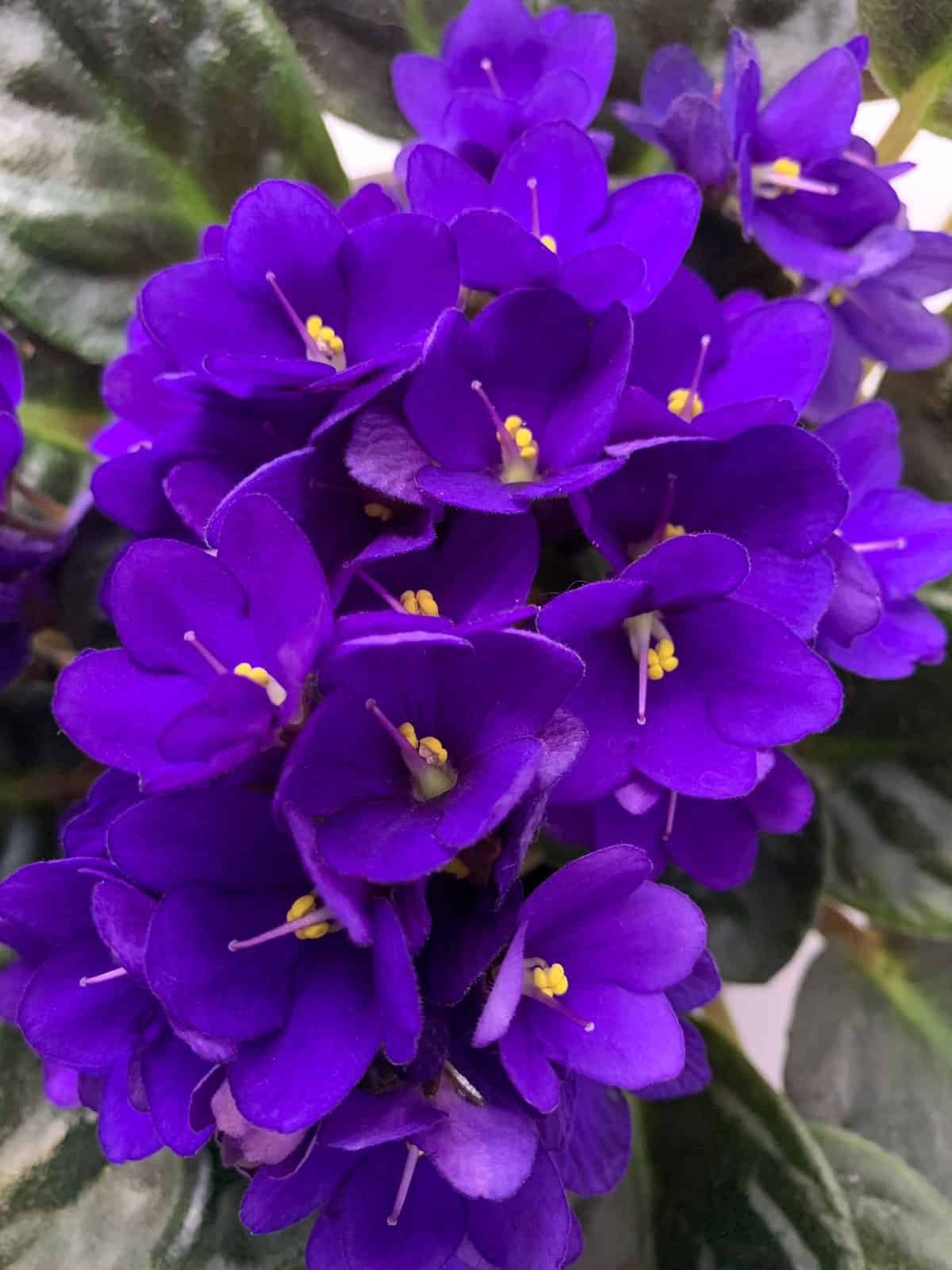
The African violet is a small houseplant that features large fuzzy green leaves and clusters of small, colorful flowers. The blooms can be various shades of white, purple, or pink.
Its Latin name is Saintpaulia ionantha.
Medium to bright indirect sunlight is optimal for the African violet's growth. The soil should be loose, well-draining, and rich in nutrients. Use a high-phosphorous fertilizer every few weeks.
17. Gloxinia
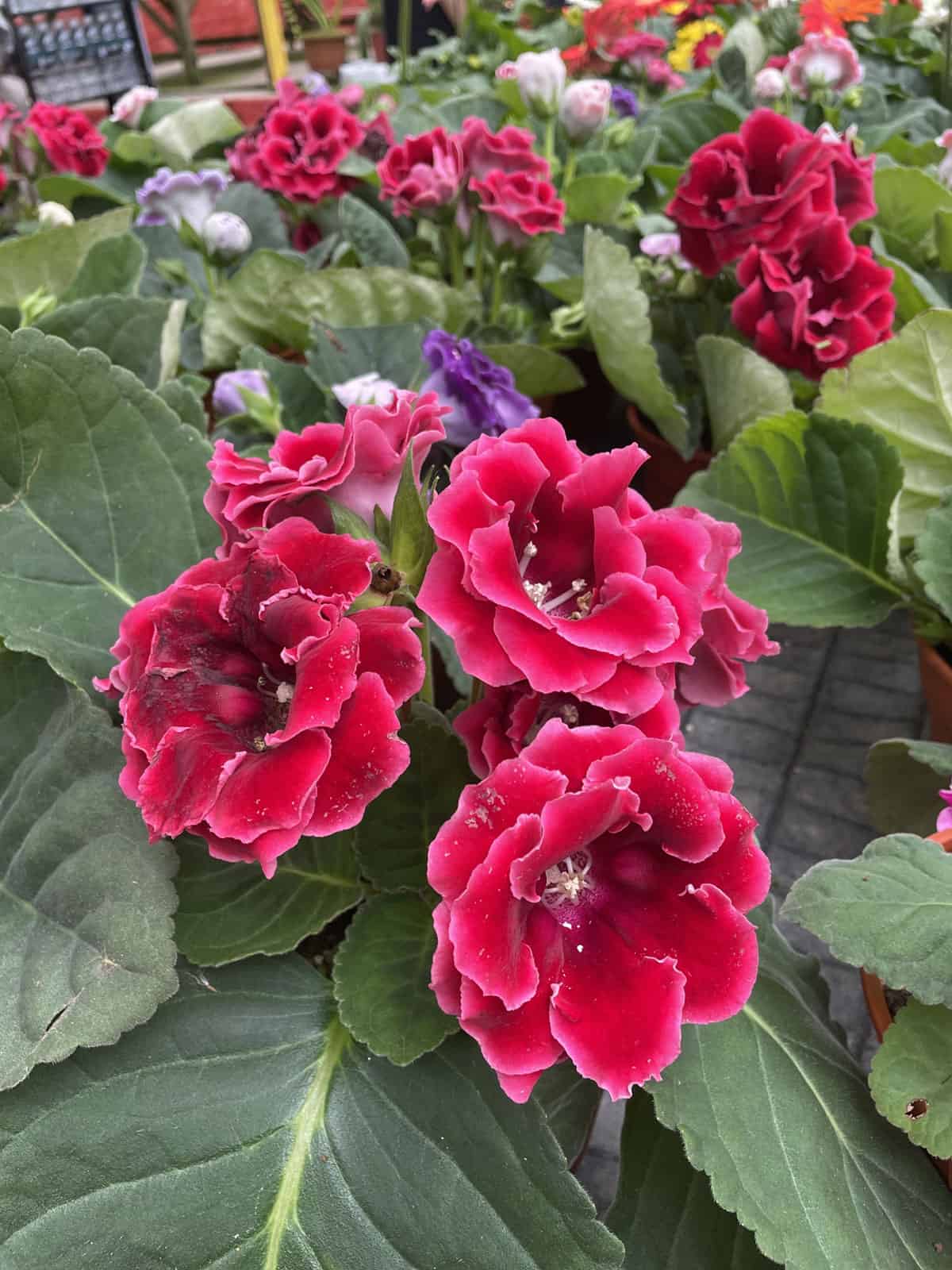
The gloxinia plant is a show-stopper with its large, colorful blooms and bright green foliage. It has an abundance of ruffled, bell-shaped blooms in shades of pink, purple, red, burgundy, and white.
The plant grows to a height between 8 and 12 inches. Its Latin name is Sinningia speciosa.
Gloxinias need to receive bright, indirect sunlight. The soil should be kept moist but not soggy. Apply a high-phosphorous fertilizer every few weeks when the plant is flowering.
In Closing
Let us know in the comment section which plants you add to your home. Before you go, check out these other garden guides that may be of interest:
11 Indoor Hanging Plants With Flowers
15 Vegetables That You Can Grow Indoors In Winter

